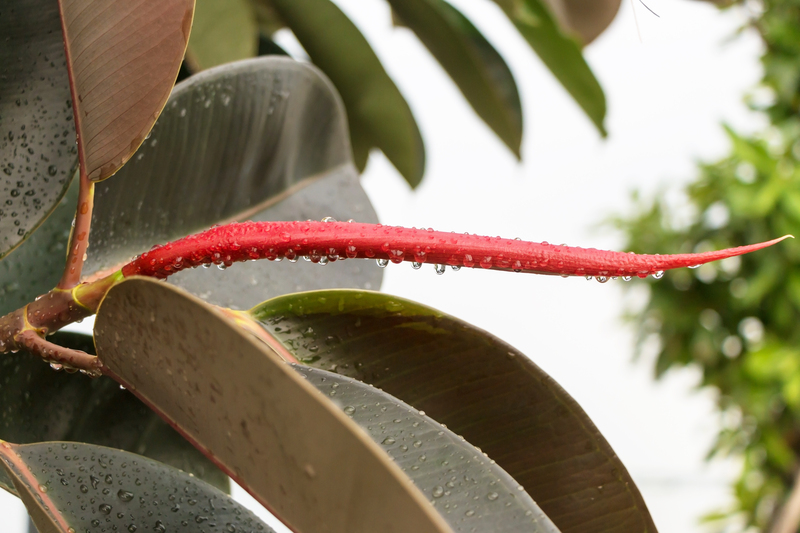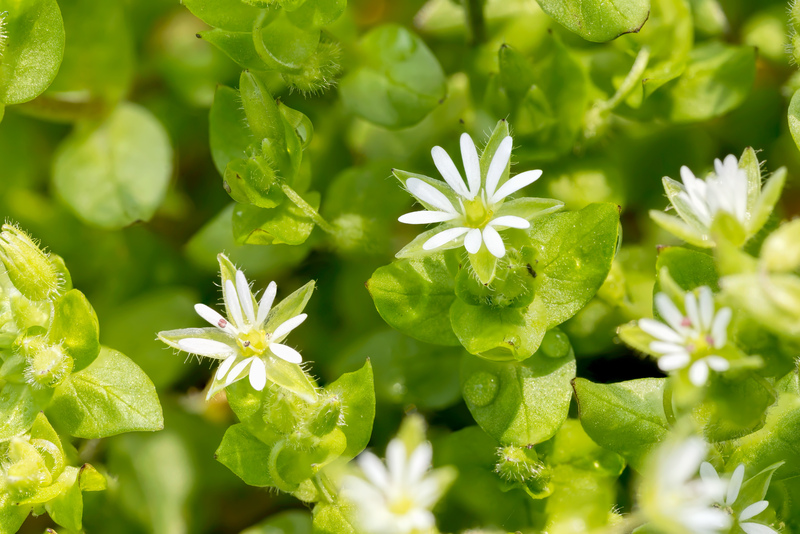3 Unbeatable Methods to Maintain a Weed-Free Environment
Posted on 26/08/2025
3 Unbeatable Methods to Maintain a Weed-Free Environment
Creating a weed-free environment is the dream of homeowners, gardeners, and landscape enthusiasts alike. Weeds not only ruin the aesthetic appeal of gardens and lawns but also compete with desirable plants for nutrients, water, and sunlight. With the surge in eco-friendly gardening and sustainable landscaping, discovering effective weed control techniques has never been more important. If maintaining pristine, verdant, and weed-free surroundings is your goal, read on to explore the top three tried-and-true methods, plus additional tips to enhance your approach.
Understanding the Importance of Weed Management
Before diving into the unbeatable strategies for preventing weeds, it's important to understand why weed prevention matters. Weeds can:
- Impede plant growth by competing for water, nutrients, and light
- Harbor pests and diseases that can damage cultivated plants
- Reduce crop yields in vegetable gardens and farmlands
- Pose health risks to pets and humans (e.g., allergenic weeds)
- Increase maintenance time and costs

Method 1: Implementing Preventive Mulching
Why Mulching Works Wonderfully Against Weeds
Mulching is one of the most effective and environmentally safe methods to maintain a weed-free garden. By covering the soil surface with organic or inorganic materials, you can:
- Block sunlight that weeds need to germinate and grow
- Retain soil moisture and regulate temperature, aiding healthy plant growth
- Add nutrients to the soil (in the case of organic mulch)
- Minimize soil erosion and compaction
Types of Mulch and Their Benefits
There are two primary types of mulch you can use for effective weed protection:
- Organic Mulch: Includes straw, wood chips, bark, compost, and shredded leaves. These materials decompose over time, improving soil structure and fertility. Organic mulch is ideal for flower beds, vegetable gardens, and around trees.
- Inorganic Mulch: Consists of materials like landscape fabric, black plastic, gravel, or pebbles. These offer long-lasting weed suppression and are excellent for pathways, decorative landscapes, or under permanent plantings.
How to Apply Mulch for Optimal Weed Control
For the best mulching for weed prevention:
- Clear the planting area of existing weeds and debris first.
- Spread a 2-4 inch (5-10 cm) layer of mulch around plants and across bed surfaces. Avoid piling mulch directly against stems or trunks.
- Replenish organic mulch regularly as it decomposes. For inorganic mulch, check for weeds that may penetrate the barrier over time.
- Combine with a layer of landscape fabric under the mulch for improved, long-lasting weed suppression.
*Mulching not only achieves effective weed control, but also boosts soil health and reduces watering needs--a win-win method for every gardener.*
Method 2: Strategic Manual and Mechanical Weed Removal
Hand Pulling - The Immediate, Chemical-Free Solution
Hand weeding remains a cornerstone of maintaining a weed-free zone, especially when tackling unwanted growth in garden beds or among sensitive plants. Removal by hand ensures that:
- Entire root systems are extracted, preventing weed regrowth
- Safe, toxin-free management
- Immediate results in small or localized areas
Mechanical Weeding and Cultivation
For larger lawns or expansive landscapes, mechanical methods add efficiency to your weed reduction strategy:
- Hoeing: Use a sharp hoe to slice weeds at the soil line. This works best for annual weeds.
- Cultivators: Rotary or oscillating cultivators loosen soil and uproot shallow weed roots.
- String trimmers: Tackle weeds growing along edges or in hard-to-reach spots.
Tactics for Persistent Weeds
Some pernicious perennial weeds, such as bindweed, dandelions, and Canada thistle, can be especially challenging. For these:
- Dig deeply to remove entire root systems.
- Repeat manual removal persistently--never let them flower or set seed.
- Combine manual methods with mulching and landscape fabric to starve roots of sunlight.
Method 3: Applying Natural and Organic Weed Barriers
Use of Landscape Fabric and Barriers
Landscape fabric functions as a highly effective, long-term weed barrier. Woven or non-woven geotextiles inhibit weed growth while allowing water and air to penetrate the soil. Follow these steps for best results:
- Prepare the area by removing all existing vegetation and leveling the soil.
- Lay the landscape fabric flat, overlapping edges by at least 6 inches (15 cm).
- Cut holes only where desired plants will be inserted.
- Cover fabric with a protective layer of mulch or decorative stone to shield it from ultraviolet (UV) light.
Organic Barriers: Cardboard and Newspaper
An eco-friendly alternative to synthetic barriers is the use of cardboard or layers of newspaper:
- Lay several sheets of newspaper or thick cardboard over soil in planting beds.
- Wet materials to keep them in place.
- Top with 2-4 inches (5-10 cm) of organic mulch.
Additional Organic Solutions
For certain problem areas, you can combine barriers with:
- Solarization - Covering soil with clear plastic to "bake" and kill weed seeds during hot months
- Dense ground covers - Planting fast-growing plants that outcompete weeds for sunlight, such as clover, creeping thyme, or ivy
Maintenance and Proactive Measures: Making Weed-Free Last
Even after deploying the three unbeatable methods above, continued vigilance is key to ensure your yard, garden, or landscape stays weed-free. Here are proactive tips to prevent weeds from returning:
- Inspect regularly: Walk your property weekly to catch and remove new weeds early.
- Avoid soil disturbance: Minimize tilling or digging, as it can bring buried weed seeds to the surface.
- Keep edges neat: Weeds often invade from lawn or sidewalk edges--install edging materials to create barriers.
- Maintain healthy grass: In lawns, mow high (2.5 - 3 inches) to shade out weed seedlings, and avoid over-fertilization.
- Water wisely: Drip irrigation or soaker hoses deliver water directly to plants, depriving weeds of moisture.
- Reseed bare patches: Open soil invites weeds. Overseed lawns and plant densely in beds to minimize open ground.
- Clean your tools: Always wash garden equipment to avoid spreading weed seeds between beds.
Do's and Don'ts for a Weed-Proof Yard
- Do: Combine several weed control methods for maximum effectiveness.
- Don't: Rely exclusively on herbicides, as overuse can damage soils and harm beneficial insects.
- Do: Choose native or adapted plants that are vigorous and competitive.
- Don't: Let weeds mature and go to seed--one single weed plant can produce thousands of seeds!
- Do: Practice crop rotation and companion planting in veggie gardens to minimize weed issues.
- Don't: Ignore the problem--early intervention is critical for a genuinely weed-free environment.

Frequently Asked Questions on Weed-Free Landscaping
What is the most effective way to keep weeds out permanently?
While no solution guarantees absolute permanence, using a combination of landscape fabric, deep mulching, and persistent manual removal establishes a strong foundation for ongoing weed prevention. Combining these methods creates a multifaceted defense that chokes out weeds season after season.
Is it better to use organic or inorganic solutions for weed barriers?
Both have unique benefits. Organic weed barriers like mulch, cardboard, and newspaper decompose but also enrich the soil. Inorganic barriers such as fabric or gravel last longer and require less maintenance but do not directly improve soil fertility. For sustainable gardening, many experts recommend a layered approach that leverages both.
Should I use chemical herbicides for weed control?
Chemical herbicides can offer quick results but often harm beneficial microorganisms, pollinators, and adjacent plants. For safe and eco-friendly weed control, prioritize manual removal, mulching, and physical barriers. Use selective herbicides sparingly, and only if all other methods have been exhausted.
Conclusion: Achieve a Weed-Free Haven
Maintaining a weed-free environment is both an art and a science, requiring proactive prevention, strategic removal, and barrier installation. By implementing preventive mulching, manual and mechanical removal, and natural barriers, you will create an enduringly weed-resistant landscape that is healthy, beautiful, and easy to maintain.
*Start today by choosing the best combination of these methods to suit your unique space. With ongoing care and attention, your vision of a thriving, weed-free garden or yard is well within reach!*

